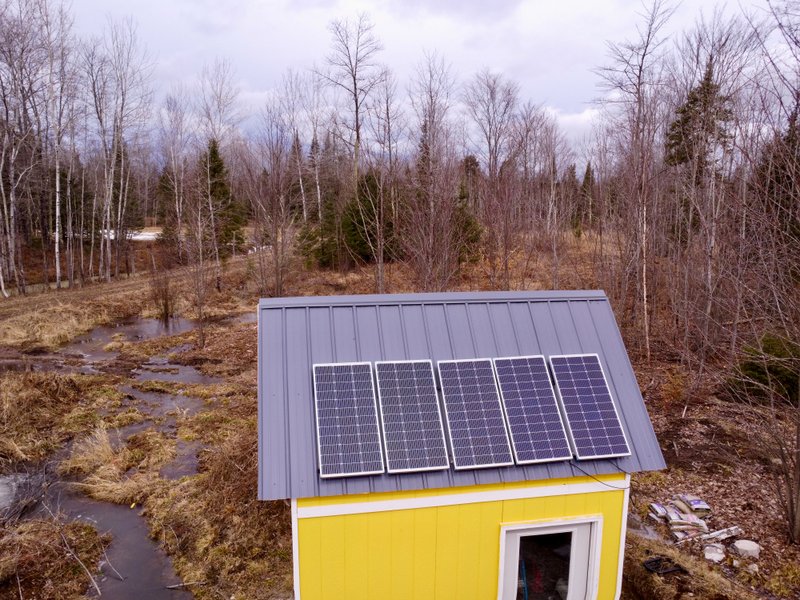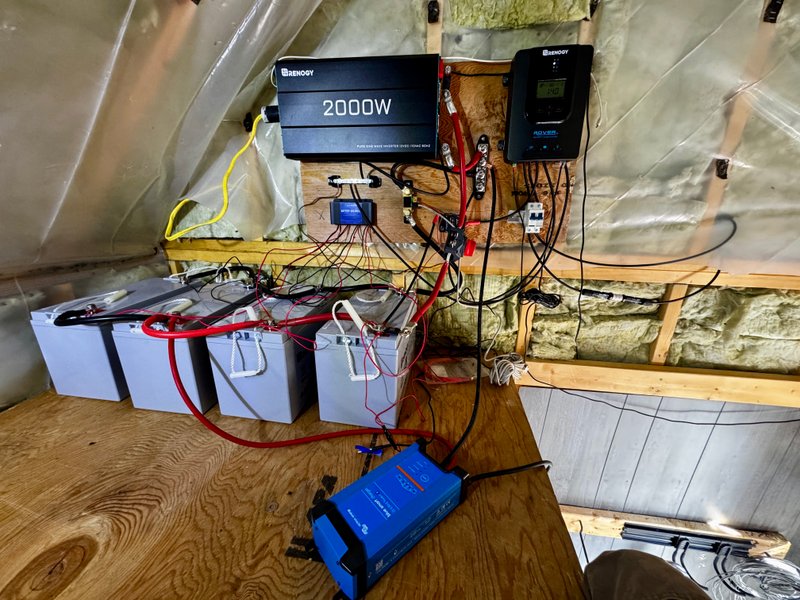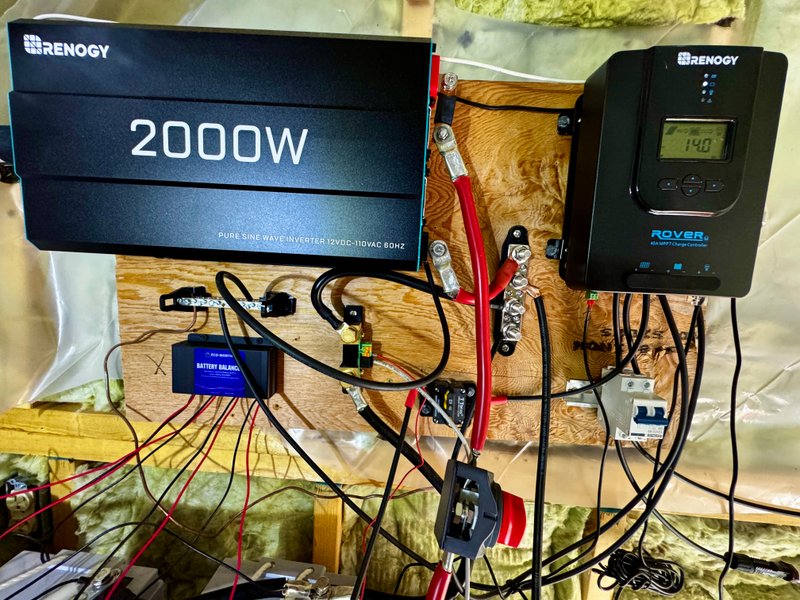Portable Power to Off-Grid Solar



From Jackery to Starlink: Our Solar Journey Begins
When we first started boondocking in April 2022, we relied on a Jackery Explorer 550 with a small solar panel. It provided just enough power to keep a laptop charged and run LTE internet from Northern Michigan University once we got on to our new property, but it was far from enough to sustain our needs. Charging devices meant carefully rationing power, and on cloudy days, we had to charge the Jackery off the truck while driving. By September 2022, we upgraded to a Renogy 100W panel with an adapter to optimize charging efficiency, which made a noticeable difference, especially in low-light conditions. Even then, our power demands continued to grow, particularly after switching to Starlink.
Building a More Robust Off-Grid System
By early 2024, we needed a more robust and sustainable power solution. Our first step was to move away from the Jackery and install a larger solar system based on a YouTube guide we found. We built out a system with four Renogy AGM 100Ah batteries, a 2000W pure sine wave inverter, and a 40A MPPT solar charge controller. With this setup, we finally had enough capacity to run the computer and Starlink for several hours. However, it wasn’t long before we realized something was off—our battery bank wasn’t performing as expected.
The Hidden Problem: Battery Underperformance
With four batteries in place, we should have had enough stored power to last well beyond a day, but our system was draining far faster than anticipated. At first, we thought the problem might be with our solar charger, but after installing the Victron Smart Shunt, we could see our true power input and output. It was clear that our batteries were not delivering anywhere near their rated capacity. That’s when we realized we had made a crucial mistake: we had not properly conditioned our batteries.
Figuring Out Proper AGM Conditioning
When we reached out to Renogy for guidance, their support team was helpful in processing a warranty replacement but offered little real technical advice beyond basic usage warnings like "don’t discharge below 20%." That wasn’t enough. We needed a clear strategy for ensuring our new batteries would perform at full capacity. After doing some research and running tests, we developed a conditioning method that made a world of difference.
The key to conditioning AGM batteries is proper charging cycles. We started by fully charging the batteries to 14.4V–14.7V in absorption mode for at least two hours before allowing them to switch to float. During the first 5–10 cycles, we carefully discharged the batteries down to around 12.3V–12.4V before recharging, progressively deepening the discharge over time to ensure proper conditioning. Once our batteries were properly broken in, we established a consistent recharge routine. We found that recharging at 12.4V to 12.5V provided the best balance between longevity and usable capacity. Occasionally, we would allow a deeper discharge to around 12.2V to get the most amp-hours without excessive wear.
Results That Finally Matched Our Expectations
After implementing this strategy, our system’s performance dramatically improved. We could finally rely on our battery bank to deliver close to its rated capacity, and we had a much clearer understanding of how to manage our power needs. In addition, we started using our generator more strategically—running a full charge cycle with the generator every few weeks to ensure the batteries received a controlled charge without fluctuations.
Throughout this process, we learned a lot about what works and what doesn’t in a DIY solar setup. Monitoring tools like the Victron Smart Shunt proved invaluable, allowing us to see exactly what was happening with our power flow. Proper battery conditioning turned out to be one of the most important steps in setting up an effective off-grid system, yet it was something that wasn’t covered in any of the manufacturer’s documentation. We also came to realize that while companies like Renogy provide decent products, their customer service and technical support can be lacking when it comes to real-world troubleshooting.
What’s Next for Our Off-Grid Power System
Looking ahead, we have plans to automate our generator start-up using the Victron Shunt, so that it can kick in whenever our voltage drops below a certain threshold. We’re also considering expanding our system by doubling the number of solar panels and batteries. Eventually, we’d like to transition to a full home-scale lithium-ion system that can power all of our needs without relying on a generator at all. But for now, our current setup provides all the power we need for our cabin, our internet, and our new 29" Ultra-Wide LG Monitor.
Final Thoughts: Don’t Skip the Learning Curve
If there’s one piece of advice we’d give to anyone considering a DIY solar setup, it’s this: do your research, use proper monitoring tools, and take the time to condition your batteries properly. A well-built solar system isn’t just about the hardware—it’s about understanding how to maintain and optimize it for long-term performance.
